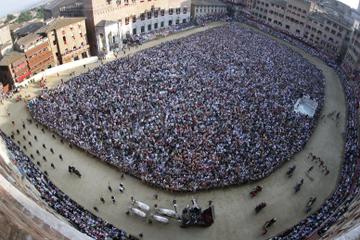Il Palio of Siena
TIME : 2016/2/22 11:45:36

Il Palio of Siena
You could describe Siena’s famous Palio as a horse race, but it’s so much more than that. Il Palio di Siena is a throwback to medieval times, a good-natured rivalry between neighborhoods, and an excuse to hold big block parties twice each summer.
Il Palio of Siena dates back to the 16th century when locals wanted a sporting event to replace the recently-outlawed bullfighting. The first races used buffalos rather than horses, with the Palio as we know it today starting in the mid-1600s. Of Siena’s 17 old neighborhoods - called “contrade” - 10 are represented by a horse and rider in each event, and the winner gets bragging rights until the next Palio.
There are two runnings of Il Palio each summer in Siena. The first is on July 2nd and the second on August 16, both staged in the city’s main square, Piazza del Campo. Sand and dirt is brought in to cover the paving stones, and the race track circles the outside of the square. Crowds pack into the center of the track, as well as all around the square, many watching from windows and balconies above.
The festivities surrounding the Palio di Siena are equally entertaining. There are marching bands decked out in medieval garb that parade through the city, bearing the flags and colors of their contrada. The men carrying the huge flags then demonstrate considerable skill by waving them in formation and throwing them to great heights - and then catching them. It’s a beautiful sight. Practical Info
The Palio itself is - as most horse races are - pretty short, usually lasting no more than two minutes. It’s ridden bareback, and riders often fall from their horses during the race. A horse can still win the Palio if it crosses the line first, even if it no longer has a rider on its back. The Piazza del Campo is actually slightly angled, which can make the race somewhat dangerous for both horses and riders - pile-ups of multiple horses are not unheard of. After the race, there are what amount to big neighborhood block parties throughout Siena, with the winning contrada being the most festive.
